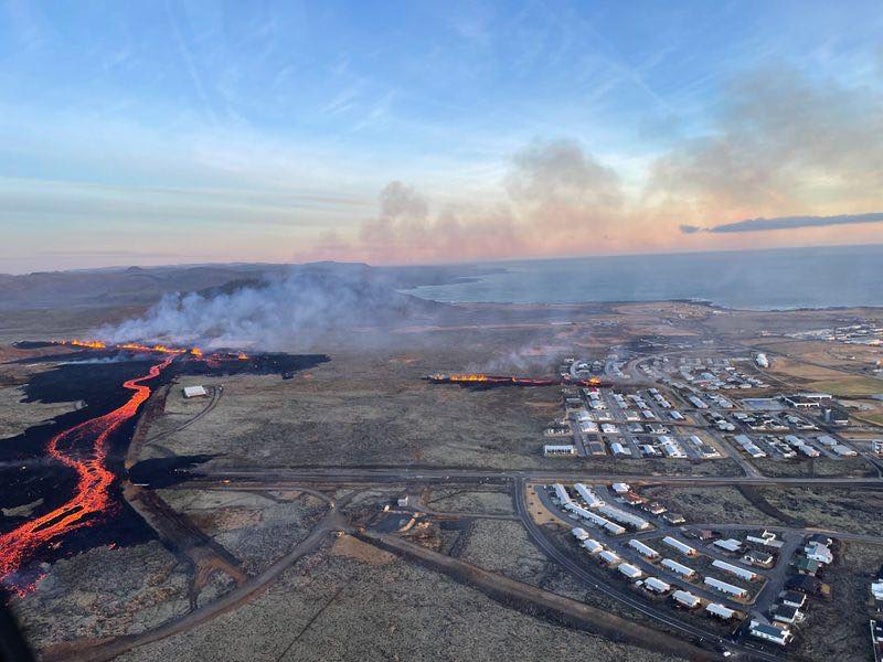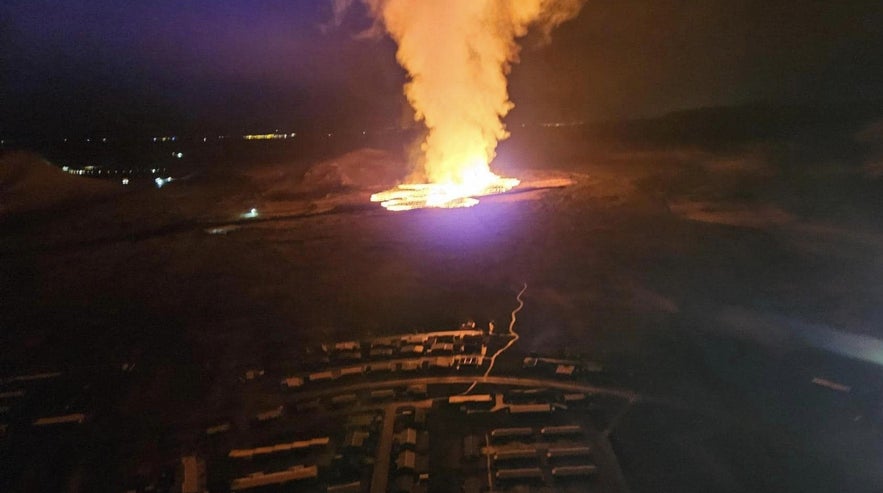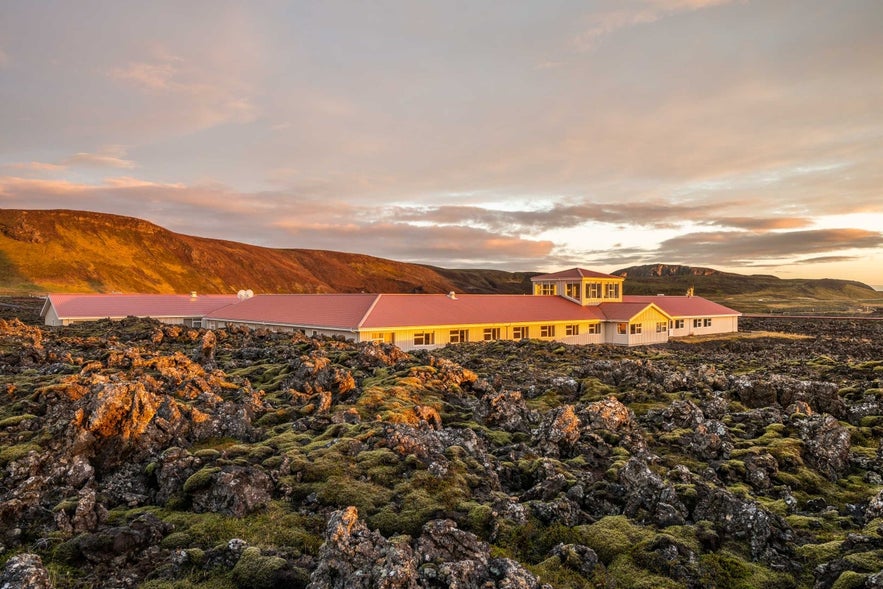
Grindavik is a town on the southern side of the Reykjanes Peninsula. It has a strong maritime history and has faced seismic activity due to its location on the Mid-Atlantic rift.
The small fishing town of Grindavik is located on the southern coast of the Reykjanes Peninsula. Known for its rich maritime history and vibrant fishing industry, Grindavik has a population of around 3,600 people. The town is situated in a region known for its unique volcanic landscape, which includes lava fields and world-famous hot springs.
Dlaczego warto zaufać naszym treściom
Guide to Iceland to najbardziej zaufana platforma podróżnicza na Islandii, pomagająca milionom turystów każdego roku. Wszystkie nasze treści są pisane i recenzowane przez lokalnych ekspertów, którzy doskonale znają Islandię. Możesz polegać na nas, otrzymując dokładne, aktualne i wiarygodne porady podróżnicze.
Generally, staying at a hotel in Grindavik is a great choice for anyone wishing to explore the rugged beauty of the Reykjanes Peninsula. It has also been a great stop on a self-drive tour in Iceland or as part of many of the available Reykjanes tours. However, as of January 2024, the town and surrounding area are closed off for safety because of volcanic activity on the edge of Grindavik.
2023 and 2024 Volcanic Eruptions in Grindavik

The volcanic eruption by Grindavik on January 14th, 2024.
Grindavik made global headlines in late 2023 after seismic activity threatened the livelihood of its inhabitants. In the preceding years, there had been several volcanic eruptions in Reykjanes. The eruptions in Fagradalsfjall and Litli-Hrutur were tourist-friendly spectacles, and thousands of people flocked to see them, but the 2023 activity by Grindavik proved to be more dangerous.
The inhabitants of Grindavik were forced to evacuate the town as magma was discovered flowing only a few hundred feet below the surface. The seismic activity in the town caused massive damage to infrastructure. What followed was a volcanic eruption on December 18th, 2023, near the town in the historic Sundhnukagigar crater row. This eruption did not threaten the town or nearby infrastructure, and it quickly came to an end just a few days later, on December 21st. Unfortunately, lava continued to gather underground, and scientists expected another eruption to follow.

The 2024 Hagafell eruption seen from a helicopter between 8 AM and 10 AM on January 14th. The smaller fissure on the edge of Grindavik had not opened yet.
Within a month, signs of a new eruption started shaking the town, leading to authorities ordering another evacuation in the middle of the night. Five hours later, around 8 AM on January 14th, 2023, a new fissure tore open. This time by the Hagafell mountain, much closer to the town.
Just two hours later, the fissure expanded into Grindavik, leaving lava to flow into the northernmost neighborhood of the town. Three houses were destroyed by the lava, and while the Hagafell volcano is still active, the lava flow from the nearest part of the fissure seems to have thankfully stopped.
The Hagafell volcanic fissure is still active though it seems to be calming down. It remains to be seen how the volcano will develop in the coming days. The whole area is currently closed off for safety. Make sure to check for updates on the SafeTravel website. You can also check out our guide to the 2024 Hagafell volcanic eruption.
History and Culture at Grindavik

Photo from Wikimedia, Creative Commons, by Diego Delso. No edits made.
Throughout history, most inhabitants of Grindavik have worked in fisheries and still do to this day. Due to its long history with the seas, the town has a museum called the Icelandic Saltfish Museum. Saltfish was essential to Icelandic survival throughout the country’s difficult past, particularly considering the volatility of the climate, and this museum discusses its production and how it helped.
Sports are popular in the town, and it has a sports club and stadium as a result. Icelandic football legend Alfreð Finnbogason was born in Grindavik. Like many places in Iceland, Grindavik also has a long history of writing. Guðbergur Bergsson was born here, and Spanish writer Jaime Salinas Bonmatí lived and died here.
Things to Do in Grindavik

Grindavik is located atop the Mid-Atlantic Ridge - the rift which separates the North American and Eurasian tectonic plates. As a result, the region is full of geothermal power, which has resulted in several wondrous natural and man-made attractions well worth checking out.
The best thing to do when visiting Grindavik is to pop by the world-famous Blue Lagoon Spa and Hotel, which is Iceland's most popular attraction. The milky blue waters found there are some of Iceland's most iconic imagery, and booking a ticket to bathe in the Blue Lagoon is a part of most travelers' plans when visiting Iceland.
For more natural geothermal sites, check out such as Krysuvik and Gunnuhver. Though bathing is not an option, they are still beautiful places to admire nature, full of bubbling hot springs, fumaroles, and mud pots.
Grindavik is also close to the Bridge Between Continents, a bridge that symbolizes the Mid-Atlantic Ridge, and visitors can experience walking between the two continents.
Where to Stay in Grindavik

Photo from Northern Lights Inn.
There are several great options for accommodation available in Grindavik and the nearby area.
The Northern Lights Inn is located within a lava field a short distance from Grindavik and the Blue Lagoon. This classy three-star hotel features a luxurious spa, a great on-site restaurant, and a well-equipped gym for guests to enjoy on-site. As its name suggests, the Northern Lights Inn is also a great place to view the aurora borealis when conditions allow.
The Harbor View Cottages are a great and affordable option if you plan on staying within Grindavik. These modern and self-contained units overlook the coast, creating a cozy getaway for anyone planning on exploring the region.









